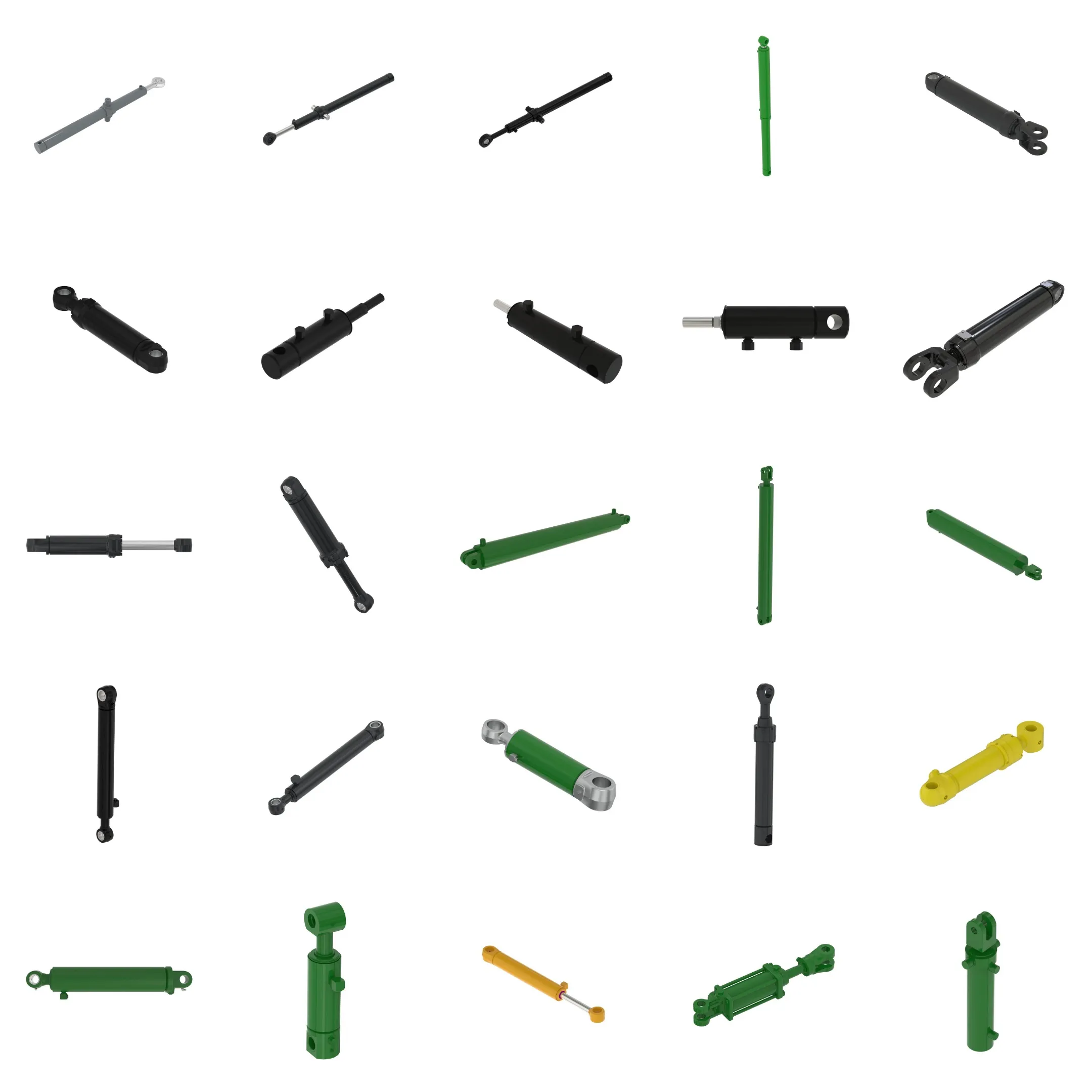Replacement Of TCA20852 Hydraulic Cylinder
Som en av produsentene, leverandørene og eksportørene av mekaniske produkter tilbyr vi hydrauliske sylindere og mange andre produkter.
Ta kontakt med oss for mer informasjon.
Post:sales@hydraulic-cylinders.net
Produsent, leverandør og eksportør av hydrauliske sylindere.
Replacement Of TCA20852 Hydraulic Cylinder
Product Introduction
The Replacement Of TCA20852 Hydraulic Cylinder is a hydraulic device used for various applications. It plays a crucial role in maintaining the normal operation and performance of equipment. With a weight of 6.57 lb, a height of 2.25 in, a width of 3.4 in, and a length of 12.8 in, this hydraulic cylinder is designed to fit the 7200 and 7400 models.
Product Specifications
- Weight: 6.57 lb
- Height: 2.25 in
- Width: 3.4 in
- Length: 12.8 in
Key Features
- Improved Equipment Performance: Replacing damaged or worn-out hydraulic cylinders can restore the normal operation of equipment and ensure its performance in various applications.
- Enhanced Safety: Regularly replacing hydraulic cylinders reduces the safety risks associated with cylinder failures, ensuring the safety of operators and equipment.
- Overload Protection: New cylinder designs typically incorporate better overload protection mechanisms, increasing safety.
- Quick Installation: Modern hydraulic cylinders are designed for easy installation and replacement, minimizing downtime.
- Standardized Components: Many hydraulic cylinders are standardized, making it easier to obtain replacement parts in the market.
Application Scenarios
- Excavators: Hydraulic cylinders in excavator arms or buckets may get damaged due to long-term use or overload, requiring replacement for normal operation.
- Cranes: Hydraulic cylinders in crane booms are prone to wear during frequent lifting and lowering processes, necessitating regular replacement for safety.
- Tractors: Hydraulic cylinders in front-end loader attachments for tractors may experience leaks or performance degradation during continuous lifting and tilting operations, requiring replacement.
- Harvesters: The hydraulic system in harvesters endures high pressure during the harvesting process, and cylinders may get damaged due to fatigue, requiring prompt replacement to maintain work efficiency.
- Automated Production Lines: Hydraulic cylinders are used to control robotic arms and other automated equipment. Cylinder failures can significantly impact production efficiency, necessitating immediate replacement.
- Die Casting Machines: In high-pressure and high-temperature environments, hydraulic cylinders in die casting machines may experience performance degradation, and regular replacement ensures product quality.
- Mining Equipment: Hydraulic cylinders are used for lifting and moving heavy loads in mining equipment. Due to the harsh working conditions, regular inspection and replacement are necessary to avoid equipment failures.
- Bulldozers: Worn-out hydraulic cylinders on bulldozer blades can result in decreased pushing capability, requiring timely replacement to maintain operational efficiency.
Maintenance Tasks
- Regular Inspection: Periodic inspection ensures early detection of any issues and prevents potential failures.
- Proper Lubrication: Adequate lubrication helps reduce friction and wear, extending the lifespan of the hydraulic cylinder.
- Seal Replacement: Regularly replacing seals helps maintain the sealing performance of the cylinder, preventing leaks.
- Calibration Check: Checking and calibrating the cylinder ensures accurate operation and performance.
Safety Considerations and Environmental Factors
When using hydraulic cylinders, it is essential to prioritize safety measures. Proper handling and following safety guidelines are crucial to avoid accidents and injuries. Additionally, considering environmental factors in the selection and use of hydraulic cylinders helps minimize the impact on the environment.
Troubleshooting and Common Issues
1. Cylinder Leakage: If the hydraulic cylinder is experiencing leakage, check the seals and connections for damage. Replace any faulty components and ensure proper sealing.
2. Insufficient Power: If the cylinder lacks power, inspect the hydraulic system for any blockages or malfunctions. Check the pressure and flow rate of the system to ensure optimal performance.
3. Erratic Operation: If the cylinder is operating erratically, check for any air or contamination in the hydraulic system. Bleed the system and ensure proper fluid cleanliness.
Troubleshooting Tips and Solutions
1. Leakage: Ensure all seals are in good condition and properly lubricated. Tighten any loose connections and replace damaged seals.
2. Insufficient Power: Check the hydraulic pump for proper operation and inspect the system for any restrictions. Adjust the pressure and flow rate as needed.
3. Erratic Operation: Purge the hydraulic system of any air or contamination. Replace any clogged filters or damaged components.

Design Considerations and Selection Criteria
- Load Capacity: The hydraulic cylinder should be selected based on its ability to handle the required load.
- Sealing Capability: Choosing high-quality seals ensures proper sealing and prevents leaks.
- Durability: Opt for cylinders made from durable materials to withstand challenging working conditions and increase longevity.
- Safety: Consider safety features such as overload protection mechanisms to prevent accidents.
- Maintainability: Cylinders designed for easy maintenance and repair help minimize downtime.
Sealing and Lubrication
Hydraulic cylinders utilize various sealing components, such as piston seals and rod seals, made from materials like polyurethane and nitrile rubber for wear resistance. The cylinder body and threaded ends undergo precise processing to enhance wear resistance. Regular lubrication with the appropriate amount of hydraulic oil helps ensure smooth operation and longevity.
Regular Inspection and Preventive Maintenance
- Proper Installation: Providing guidance on aligning the cylinder correctly during installation.
- Recommended Use of Installation Brackets: Suggesting the use of appropriate installation brackets to secure the cylinder.
- Inspection, Repairs, and Replacement Procedures: Recommending inspection schedules and procedures for identifying and addressing any issues. Providing replacement parts and rebuilding services to extend the lifespan of the hydraulic cylinder.
- Tips for Prolonging the Lifespan: Offering techniques to maximize the longevity of the hydraulic cylinder, such as proper usage and maintenance.

About Our Company
We are a leading manufacturer and wholesale distributor of replacement hydraulic cylinders. With a comprehensive range of products, we have become a prominent player in the domestic and international markets. Our company is known for its professionalism, international certifications, customization services, advanced production equipment, and exceptional customer support.

Author: lyl
Take a Tour of Our VR Factory:
Take a tour of our VR factory with the following
Hydraulic Cylinder Application:


